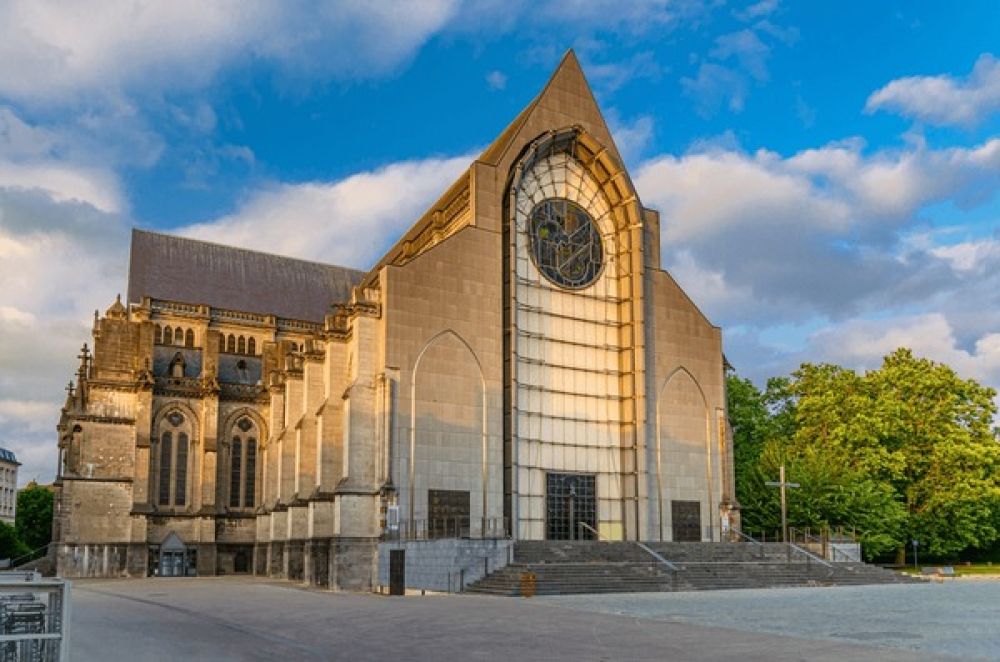

The Lille Cathedral, also known as the Basilique Cathedrale Notre-Dame de la Treille, is a prominent Roman Catholic cathedral and basilica located in the heart of Lille, France. The monument is not only a site of religious importance but also an architectural gem that has attracted tourists and pilgrims for years.
The history of the cathedral dates back to the mid-19th century when the first stone was laid in 1854. It was built to honor the Virgin Mary and to house a statue of her, which had been revered in Lille since the 12th century. The cathedral's unique architecture combines elements of Gothic and modern styles. The main facade, completed in 1999, features a modern design with a translucent marble panel that captivates visitors. The cathedral was not officially completed until 1999, although it has been in use for much longer.
Lille Cathedral has always been an important place for religious tourism. However, its historical and architectural significance has broadened its appeal. Through the years, the cathedral has become an essential stop for those interested in Gothic architecture, religious heritage, and the cultural history of Lille.
With the emergence of cultural tourism and the increasing interest in historical landmarks, Lille Cathedral's tourism history saw a new dimension. Moreover, the cathedral's vicinity to other tourist attractions in Lille's vibrant city center has contributed to its popularity.
Aside from the ever-present historical and cultural tourists, the latest trend involves experiential travel. Visitors are increasingly seeking immersive experiences that connect them with the local culture and history. Events like organ concerts, art installations, and themed tours have become part of the cathedral's tourism offerings, creating a richer experience for attendees. These activities engage tourists, encouraging them to delve deeper into the significance of the cathedral and its place in Lille's fabric.
Looking forward, Lille Cathedral is expected to continue evolving to accommodate the changing tastes and interests of tourists. Plans for restoration and preservation will likely merge with the increasing demand for sustainable tourism practices. As visitors become more eco-conscious, the management of tourist sites such as this is adapting to ensure that the beauty and integrity of the cathedral are maintained for future generations to enjoy.
Basilique Cathedrale Notre-Dame de la Treille remains an essential destination for anyone visiting Lille. Not only does it offer a peaceful and spiritual ambiance, but it also serves as a testament to the rich history and artistic endeavor that characterize this corner of France. The cathedral continues to stand as a beacon of Lille's past and present, inviting tourists from all over the world to explore its grandeur and sanctity.